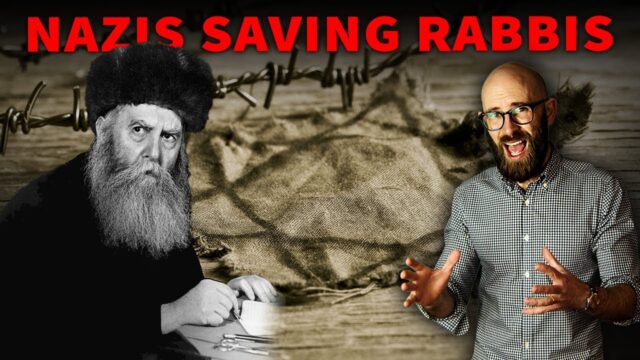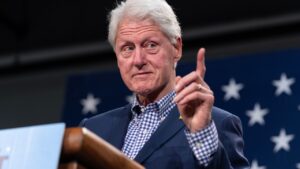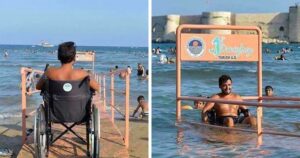“Unlikely Allies: The Shocking Nazi Mission to Rescue a Jewish Leader that Shook History”
Schneerson’s activism only increased following the Russian Revolution of 1917, when the Jewish community found itself in opposition to the official Bolshevik policy of State Atheism. This policy, which sought the eradication of all religion across the Soviet Union and the world, was overseen by a special branch of the Communist Party known as the Yevsektzia. Throughout the 1920s, Schneerson established a network of underground yeshivot or traditional religious schools across Russia in order to preserve Jewish culture. Then, upon the death of his father on March 21, 1920, he assumed the title of the sixth Lubavitcher Rebbe.
In 1924, the Cheka, the Bolshevik secret police, forced Schneerson to leave Rostov-on-Don and relocate to Leningrad – today Saint Petersburg. There he continued his underground activities, dispatching Chabad representatives and founding seminaries across the Soviet Union to strengthen Jewish communities. But on March 21, 1927, as Schneerson was observing the yahrzeit or anniversary of his father’s death, three Cheka agents burst into his synagogue to arrest him. According to legend, Schneerson responded to the armed men by saying:
“This little toy [your gun] has made many a man change his mind. That little toy can intimidate only the kind of man who has many gods-passions, and but one world-this world. Because I have only one God and two worlds, I am not impressed by your little toy.”
Schneerson was imprisoned in Leningrad’s infamous Shpalerna Prison, and following a show trial was convicted of counter-revolutionary activities and sentenced to death. Thankfully, following protests from Western governments and the International Red Cross, his sentence was commuted to three years’ exile to the city of Kostroma and then banishment to Riga in Latvia. There he established another Talmudic seminary and organized the state-controlled factory production of Matzah or unleavened bread for the celebration of Passover. Today, Rebbe Schneerson’s release from Soviet prison is celebrated annually by the Chabad-Lubavitch community
In 1929, Schneerson visited the Holy Land – then in the British Mandate of Palestine – before travelling to the United States, arriving in New York City on September 17th aboard the ocean liner SS France. Some 600 followers gathered at the docks to meet the Lubavitcher Rebbe, while 100 New York City Police officers were assigned as his security detail. During his eight-month visit, Schneerson travelled to Philadelphia, Baltimore, Detroit, Boston, Chicago, Milwaukee, St. Louis, and Washington D.C., where he met with President Herbert Hoover – among several world leaders who had petitioned for his release. Schneerson’s goal was to spread awareness of the plight of Russian Jewry, who due to Soviet policy were easily censored and forbidden to leave the country. Due to this dangerous political climate, Schneerson’s American followers urged him to remain in in the United States, but he refused, the newspaper The Jewish Record reporting that:
“A movement has begun among Chabad Chassidim to have the Lubavitcher Rebbe remain in America. A committee was organized under the name of “Agudas Chassidei Chabad,” in which are represented all of the Chabad shuls of Chicago. The committee will develop plans that will enable the fulfillment of this wish, for the Rebbe to stay in America…The committee, under the leadership of Rabbi [Chaim Tzvi] Rubenstein, presented their wish to the Rebbe. While the Rebbe hasn’t yet given a positive response, he stated clearly that he cannot even begin to consider their plan, unless it would be understood that his coming [to America] would also mean the establishment of a Yeshivah Tomchei Temimim in whichever community he would choose to reside.”
At the time, the establishment of a traditional Yeshiva in the United States was not a popular one, with American Jews viewing such establishments as outdated holdovers from the Old Country incompatible with progressive American values. As a result, Schneerson dismissed the United States as too irreligious and returned to Riga, where he remained until 1934 when he again relocated to Otwock, a suburb of Warsaw. Then, in September 1939, the Nazis invaded Poland, and this is where our story finally begins.
Initially, Schneerson refused to leave Otwock, remaining to tend to his community as best he could. But once it became clear that the Polish Army could not hold out much longer, Mordecai Dubin, a Chabad follower and member of the Latvian parliament, arranged for Schneerson and his family to settle in Riga. However, to reach the Latvian capital the Rebbe would have to reach Warsaw and catch a train north – a perilous 60 kilometre journey along a road frequently bombed and strafed by Luftwaffe aircraft. Nonetheless, the now 59-year-old Rebbe, overweight and suffering from multiple sclerosis, left Ostwock along with his family and a group of devoted followers – only to find the Warsaw Train Station destroyed. They were thus forced to seek refuge among Chabad followers in the Warsaw Ghetto while day after day German aircraft systematically flattened the city’s Jewish neighbourhoods. It seemed only a matter of time before Schneerson and his family were either killed or arrested.

















